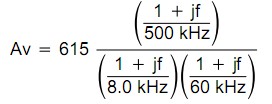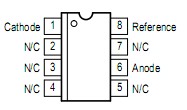TL431BC: ApplicationThe TL431 is a programmable precision reference which is used in a variety of ways. It serves as a reference voltage in circuits where a nonstandard reference voltage is needed. Other use...
floor Price/Ceiling Price
- Part Number:
- TL431BC
- Supply Ability:
- 5000
Price Break
- Qty
- 1~5000
- Unit Price
- Negotiable
- Processing time
- 15 Days
SeekIC Buyer Protection PLUS - newly updated for 2013!
- Escrow Protection.
- Guaranteed refunds.
- Secure payments.
- Learn more >>
Month Sales
268 Transactions
Payment Methods
All payment methods are secure and covered by SeekIC Buyer Protection PLUS.

 TL431BC Data Sheet
TL431BC Data Sheet













